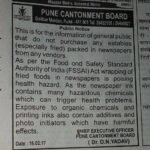National Voluntary Blood Donation Day

Every year on October 1 National Voluntary Blood Donation Day is observed It was first observed on October 1 in the year 1975 by the Indian Society of Blood Transfusion and Immunohematology, the organisation that was founded back in in the year 1971 on October 22.
DONATING BLOOD HELPS IN
Donating blood helps prevent or reduce your risk of developing hemochromatosis, a condition that occurs due to excess absorption of iron by the body. Regular blood donation may help avoid iron overload, hence it can be beneficial for people with hemochromatosis.
Regular blood donation helps to keep iron levels in check, which reduces the risk of heart disease.
Lowering risk of developing cancer.
Blood donation helps to enhance the production of new blood cells.
LEARNING FROM HOMES/ WITHOUT CLASSES/ BASICS
Blood is made up of red blood cells, white blood cells and platelets , liquid called plasma.
- Red blood cells ,also called erythrocytes, which carry oxygen throughout the body, it carry around an important chemical called hemoglobin that gives blood its red color;
- White blood cells, also called leukocytes, which fight infections;
- Platelets, thrombocytes , are cells that help you stop bleeding if you get a cut;
- Plasma, a yellowish liquid that carries nutrients, hormones, and proteins throughout the body.
Bone marrow — that goopy stuff inside your bones — makes the red blood cells, the white blood cells, and the platelets. Plasma is mostly water, which is absorbed from the intestines from what you drink and eat, with the liver supplying important proteins.
Your blood group is identified by antibodies and antigens in the blood.
Antibodies are proteins found in plasma. They’re part of your body’s natural defences. They recognise foreign substances, such as germs, and alert your immune system, which destroys them.
Antigens are protein molecules found on the surface of red blood cells.
The ABO system
There are four main blood groups defined by the ABO system:
Blood group A – has A antigens on the red blood cells with anti-B antibodies in the plasma
Blood group B – has B antigens with anti-A antibodies in the plasma
Blood group O – has no antigens, but both anti-A and anti-B antibodies in the plasma
Blood group AB – has both A and B antigens, but no antibodies





0 Comments